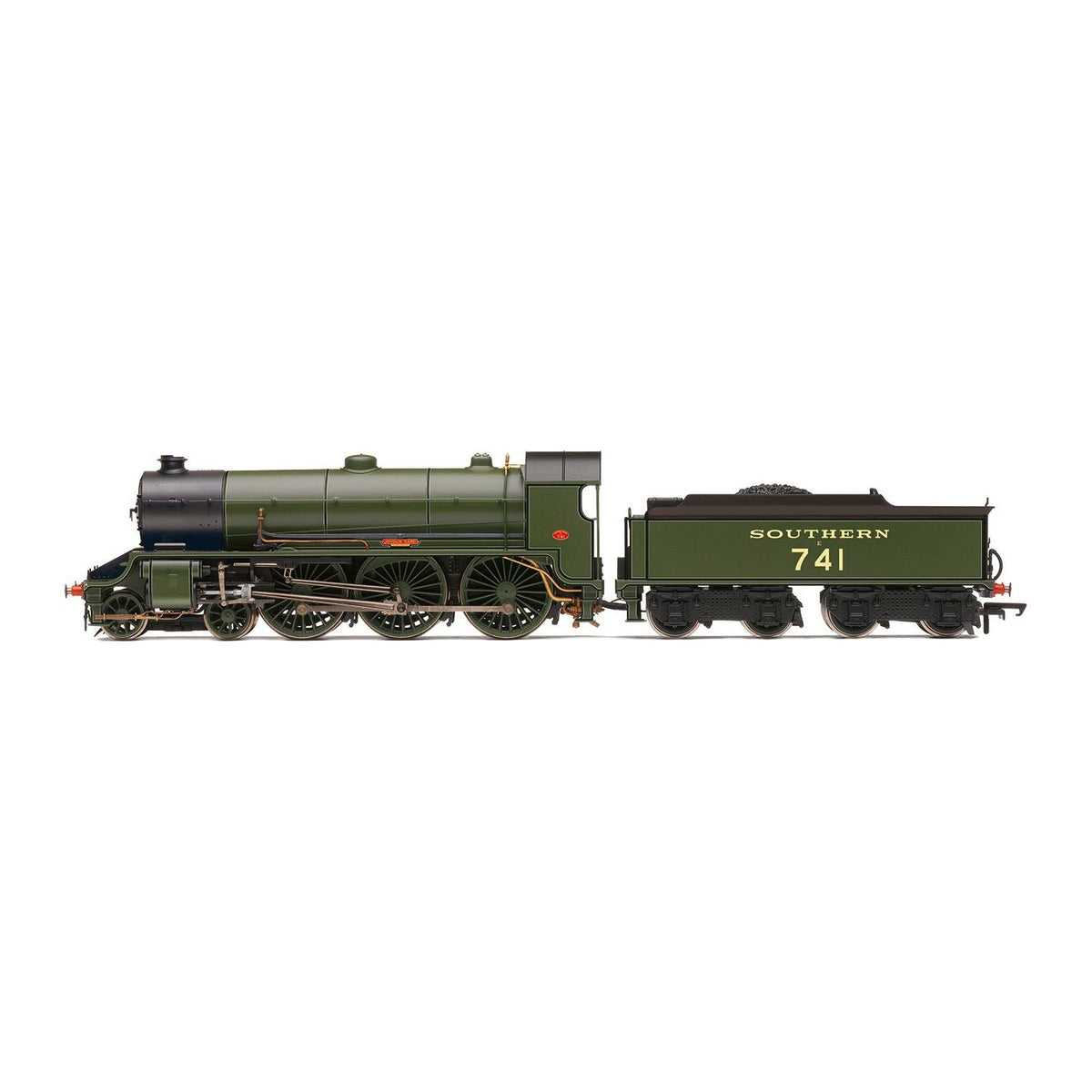HORNBY OO SR, N15 ‘King Arthur Class’, 4-6-0, 741 ‘Joyous Gard’: Big Four Centenary Collection – Era 3 HORNBY
$ 499,99 $ 150,00
HORNBY OO SR, N15 ‘KING ARTHUR CLASS’, 4-6-0, 741 ‘JOYOUS GARD’: BIG FOUR CENTENARY COLLECTION – ERA 3
The N15 Class, introduced in 1918 from a design by Robert Urie, was also known as the King Arthur Class, being named after persons and places associated with the legend of King Arthur and the Round Table. This class of two cylinder 4-6-0 passenger steam locomotives proved to be one of the most successful during the post-grouping era of 1928-1948, with 74 locomotives being built during this time.
The whole class was built in a total of six batches, with the first two batches being built at the London & South Western Railway’s Eastleigh Works between 1918-19 and 1922-23. Carrying the characteristics of Urie’s stove pipe chimney, Drummond style of cab and inspired by the shape of the H15, the first batches of locomotives became known as ‘Urie Arthurs’.
Upon assuming the position of CME of the Southern Railway, Richard Maunsell built a third batch of ten locomotives at the Eastleigh Works and these became known as the ‘Eastleigh Arthurs’. Maunsell’s batch incorporated a small number of significant modifications including changes in the draft, valve gear, chimney, blastpipe and an overall increase in boiler pressure that significantly improved the performance.
In 1924 two more batches were ordered from the Scottish based North British Locomotive Company. These 30 locomotives, referred to as ‘Scottish Arthurs’ were built to the Southern Railways new composite loading gauge and were connected to eight wheel bogie tenders, which had a 5,000 imperial gallon capacity.
The last batch of 15 locomotives were built at Eastleigh between 1926-27 and adopted a six wheel 3,500 imperial gallon tender. Despite the order the batch was never completed, with the last locomotive being replaced by the prototype of the Lord Nelson Class of locomotives. Having proved to be one of the greatest designs of its day, the King Arthur Class combined reliability with impressive performance.
The introduction of electrification, plus the Lord Nelson Class and ultimately, the Bulleid Pacific locomotives, all hastened the N15’s departure.’Joyous Gard’ was the sixth example of the class to be built, numbered 741 it would leave the shed at Eastleigh in April 1919. During its life the locomotive would receive various modifications such as the class wide installation of smoke deflectors as well as being fitted with a Lemaitre exhaust, becoming one of only five of the class to have the upgrade fitted.
The locomotive would become 30741 under British Railways, before being withdrawn and scrapped in February 1956. Only one member of the class would be preserved, a North British Loco built example, 777 Sir Lamiel, part of the National Collection, under the care of the 5305 Locomotive Association, being based at the Great Central Railway in Leicestershire.
The Hornby N15 model is fitted with a 5 pole motor which pairs well with its diecast chassis to provide excellent traction and pulling power. The model is 8 pin DCC ready for digital users who may wish to upgrade the locomotive to DCC.
Tech Specs
- Item Length – Without Packaging (cm)
- 24
- Item Height – Without Packaging (cm)
- 5
- Item Width – Without Packaging (cm)
- 3.5
- Item Weight – Without Packaging
- 0.34
- Item Scale
- 1:76 Scale 00 Gauge
- Finish
- Painted
- Colour
- Green
- Gauge
- OO
- DCC Status
- DCC Ready 8 pin socket
- Operator
- SR
- Designer
- Robert Urie
- Wheel Configuration
- 4-6-0
- Livery
- SR Sage Green
- Minimum Curve (mm)
- Radius 2
- Number of Parts
- 1
- Buffer Type
- Sprung Metal Buffers
- Coupling Type
- NEM Tension Lock
Quick Shipping and Professional Packaging
Due to our long-term partnership in a long-standing partnership with UPS, FedEx, DHL and many other leading global carriers, we are able to offer an array of shipping options. Our warehouse staff are highly trained and will pack your products according to our precise and precise specifications. Your items will undergo a thorough inspection and be securely secured prior to being delivered. We ship to thousands clients each day across multiple countries. This is an indication of our dedication to being the biggest online retailer in the world. The warehouses are located in Europe as much as they are in the USA.
Note: Orders that include more than one item are assigned a processing time in accordance with the item.
Prior to shipment before shipping, we'll inspect thoroughly the items you've ordered. The majority of orders are shipped within 48 hrs. The time to deliver varies from 3-7 days.
Returns
We don't manage the stock in our warehouse and factory. Stocks are subject to change at any moment. You may not receive your order after the order has been made.
Our policy is for 30 days. If you have passed 30 days by since your purchase, unfortunately we can't offer you a refund or exchange.
The item cannot be used and in its original condition. It should also be in the original packaging.
Related products
RADIO CONTROL
RADIO CONTROL
RADIO CONTROL
RADIO CONTROL
RADIO CONTROL
RADIO CONTROL
RADIO CONTROL
RADIO CONTROL
RADIO CONTROL
RADIO CONTROL
RADIO CONTROL
RADIO CONTROL
(Clearance Item) HB RACING 5 Cell Main Chassis 2.5mm with Battery Tray (Cyclone) HB RACING
RADIO CONTROL


































